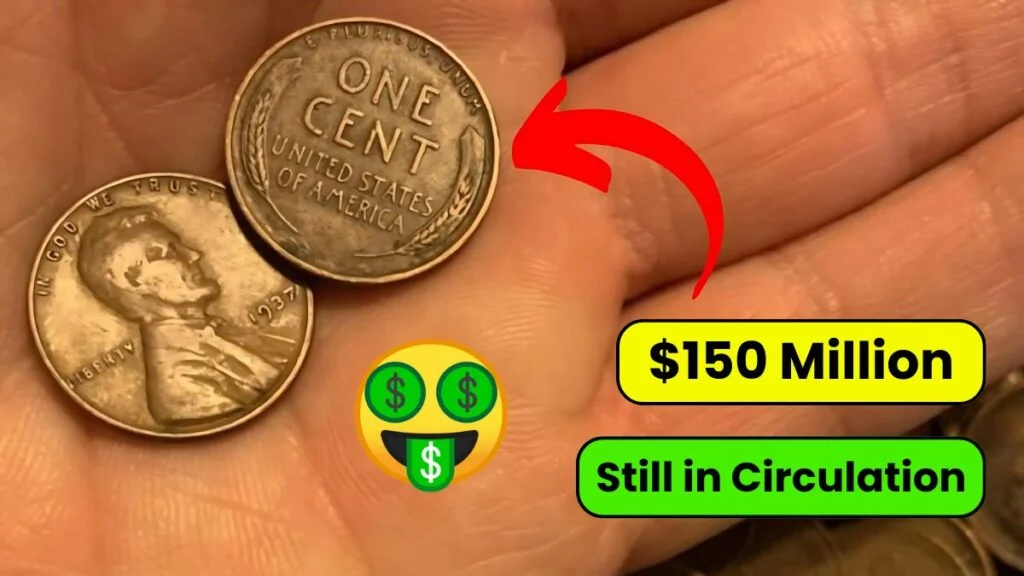The Lincoln Wheat Penny Worth $150 Million, Still in Circulation
That small penny you casually drop into a jar or dig out from under your sofa cushions could be worth far more than you think. Among the most legendary coins in American history, the Lincoln Wheat Penny—an everyday coin minted for nearly 50 years—includes a few ultra-rare examples rumored to be worth as much as $150 million. While most are worth face value, a select few have become some of the most valuable collectibles ever discovered. This unlikely transformation from pocket change to prized treasure has captivated collectors around the world.
An Icon of American Coinage
First introduced in 1909, the Lincoln Wheat Penny was created to mark President Abraham Lincoln’s 100th birthday. It was the first U.S. coin to feature a real person and bore Lincoln’s solemn profile on the front. The back showcased two wheat stalks flanking the words “ONE CENT,” symbolizing America’s agricultural heritage. This design circulated until 1958, during which time these coins passed through hands amid some of the nation’s most transformative decades—from both World Wars and the Great Depression to the Space Race. Each penny is a silent witness to America’s past.
A Wartime Mistake That Made History
Among the rarest and most expensive Lincoln Wheat Pennies is the result of a wartime blunder. In 1943, to conserve copper for World War II production, the U.S. Mint began making pennies from zinc-coated steel. However, a few copper blanks left over from 1942 remained in the machinery and were accidentally struck using the 1943 dies. These rare copper 1943 pennies were never meant to exist—and that rarity has made them legends. One such penny sold for $1.7 million in 2010, and experts now speculate that pristine examples could be worth as much as $150 million, depending on condition and demand.
What Makes These Pennies So Valuable?
The value of a Lincoln Wheat Penny, particularly one like the 1943 copper version, comes down to several important factors. First and foremost is rarity—with only about 20 verified examples known, these coins are exceptionally scarce. Condition is also key: coins in excellent or “mint state” condition fetch significantly more than worn pieces. Historical relevance adds even more weight, as these coins represent a unique moment in U.S. minting during a global conflict. When these elements align in a single coin, the result is a truly exceptional piece of history worth millions.
Other Wheat Pennies Worth Collecting
Although the 1943 copper penny is the crown jewel, other Lincoln Wheat Pennies are also worth serious money. The 1909-S VDB, named after its San Francisco mint mark and the designer’s initials, is extremely rare due to its short production run and can bring in tens of thousands. Another standout is the 1914-D penny, of which only 1.1 million were minted, making it highly collectible. The 1955 Double Die penny, known for its visually striking misprint where letters and numbers appear doubled, can command five-figure prices even in moderately used condition.
How to Spot a Rare Penny
If you’re hoping to discover a hidden gem, knowing what to look for is essential. Start with the mint year and location—dates like 1909, 1914, 1922, 1943, and 1955 are especially significant. For 1943 copper pennies, a magnet test is an easy first step: steel versions stick, while copper ones do not. You can also weigh the coin—copper is heavier than steel. Still, given the number of counterfeits, it’s important to seek professional verification for any penny that seems unusual or valuable.
Caring for a Valuable Coin
If you believe you’ve found a potentially rare Lincoln Wheat Penny, handle it with extreme care. Avoid cleaning the coin, as that can strip away its natural patina and reduce its value. Only touch the edges, and store it in a secure, protective holder that shields it from moisture, dust, and oils. The next step should be professional grading through trusted services like PCGS or NGC, which can authenticate the coin and provide a sealed case that helps preserve its value.
The Ongoing Search for Copper Gold
The thrill of possibly uncovering a rare Wheat Penny continues to drive collectors and hobbyists to dig through old jars, family coin collections, and even pocket change. While stumbling upon a penny worth millions is exceedingly rare, more modest finds still happen. This keeps the spirit of treasure hunting alive and adds an adventurous edge to the hobby. Beyond its monetary appeal, each coin offers a tangible link to the nation’s past—an artifact of history that could be hiding in plain sight.
More Than Just a Price Tag
While it’s easy to focus on the dollars, many collectors agree that the true value of Lincoln Wheat Pennies lies in their historical and educational significance. These coins act as miniature time capsules, reflecting the materials, design trends, and historical moments that shaped their era. From their origins honoring Lincoln to the wartime steel years and minting errors that became iconic, each penny tells a story. For many, that connection to the past holds more meaning than the unlikely dream of finding a $150 million coin.
Disclaimer:
This article is for informational purposes only. Coin values fluctuate with market demand and depend on authentication, rarity, and condition. While rare discoveries are possible, the chance of finding a penny worth millions is extremely low. Coin collecting should primarily be approached as a hobby or a way to explore history—not as a guaranteed investment opportunity.











